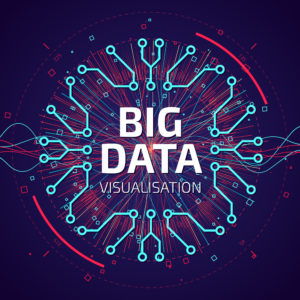I like data as much as the next guy — or at least as much as the next MBA who was taught that there is gold in the hills of analytics. Over the last decade, our focus on big data has gotten, well … only bigger. Our clicks on the internet tell businesses our tastes and inclinations. Location tracking devices not only inform the universe of where we are, but their algorithms predict where we will likely be. Data collection and its interpretation pervade our lives.
While I don’t consider myself a Luddite, I believe big data is often missing a softer side — the angle where we solicit and integrate qualitative information to add context and color to the numbers. The kind of information I am referring to is derived from more leisurely interviews with open-ended questions that depict an experience, maybe hint at some ambivalence, and generally shine a light on the emotional considerations of how and where we land on an issue. This type of discovery has frequently taught me things I would otherwise not have known. Here are two examples.
Understanding Millennials
There is a common perception that millennials are some combination of lazy, self-centered, social-media obsessed snowflakes who have been given every advantage and still choose to delay maturity. We are expected to use this information to pursue a healthier relationship.
This view feels simplistic, and so I recently interviewed a group of twenty-somethings and probed their stories — including lessons learned, inspirations and aspirations. They also completed a survey for a qualitative and quantitative assessment of the group.
From this experience, I believe that our stereotypes do not do them justice. The data don’t tell the whole story. Far from being narcissistic, this group aims to give back to their world in some substantial way, though the “way” usually feels very uncertain. Yes, there is often a degree of self-centeredness, but the gig economy holds some of the blame where managing one’s personal brand is often a ticket to survival.
“Lazy” doesn’t seem accurate either. The millennials I interviewed hold big expectations, but don’t quite know how to achieve them in a world that offers more of a zigzag than a straight shot to the goal line. Their big expectations have left many feeling depressed, vulnerable and unmoored. While it might exist, I haven’t yet seen the big data that accurately captures this dynamic.
My survey findings also indicate this group learns more from hands-on experience, the internet, and their peers, than they do from traditional coursework and managers. As parent, mentor or manager, we should understand this preference and insert a lower-value alternative like coursework into the conversation when our experience tells us it is needed, and then be prepared to explain why.
Many other findings resulted from my interviews, reminding me yet again what I have seen throughout my career: that we need to diversity the types of input we receive to form a rich and more accurate composite.
Migrating to the Cloud
Lest we think that understanding emotional underpinnings and doing a qualitative dive applies only to life choices, I recently had the opportunity to investigate the obstacles for companies considering deploying parts of their operation to the cloud (public, private and hybrid).
For cloud migration, the obstacles typically identified are concerns about security, integration and cost (or uncertain cost savings relative to effort and risk). Of course depending on the type of cloud migration being planned, the concerns will vary. For example, a private cloud is perceived as less of a security threat.
Interestingly, my interviews revealed an obstacle whose omnipresence we had not anticipated: revising business processes to match the new environment. While it might not sound so significant, respondents explained that revised processes meant flux, possible reorganization and job angst — essentially the pain of change, tumult and insecurity. And they have to get the new process right, which is not easy.
For this group, new business processes was the top hindrance. This finding might sound soft when compared to other attributes that the quant-jocks might like, but it was a substantial consideration as customers weigh migration — one that any company offering cloud services should understand.
I view the world as peppered with at least 50 shades of data, and all of them have a role. In seeking to understand our customers, our markets and our communities, we need to be facile in extracting a range of information, and just like a jigsaw puzzle, the pieces fit together for a more complete view. In this way, our big data will feel even bigger.

